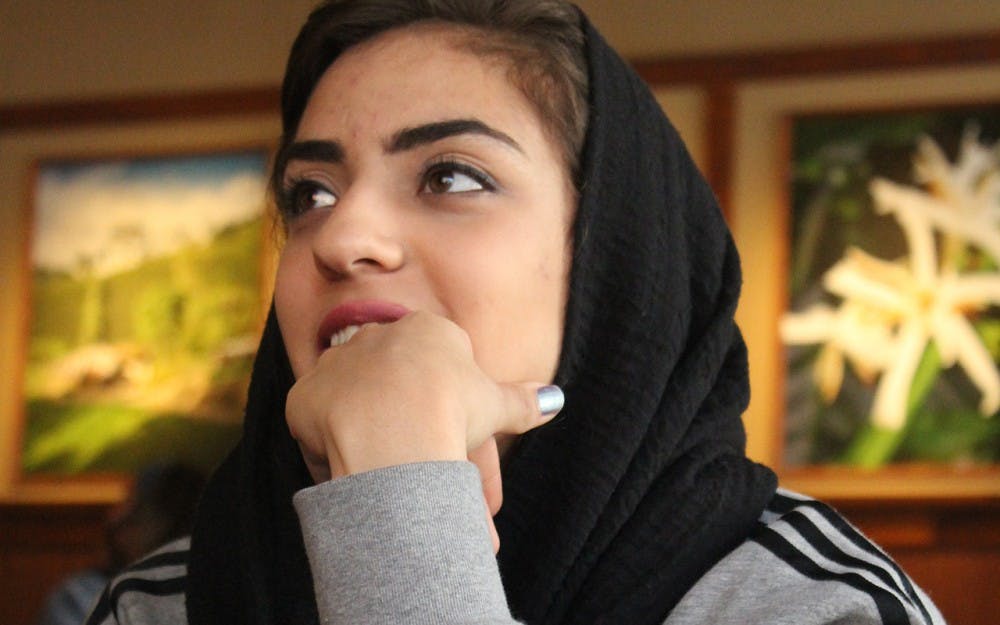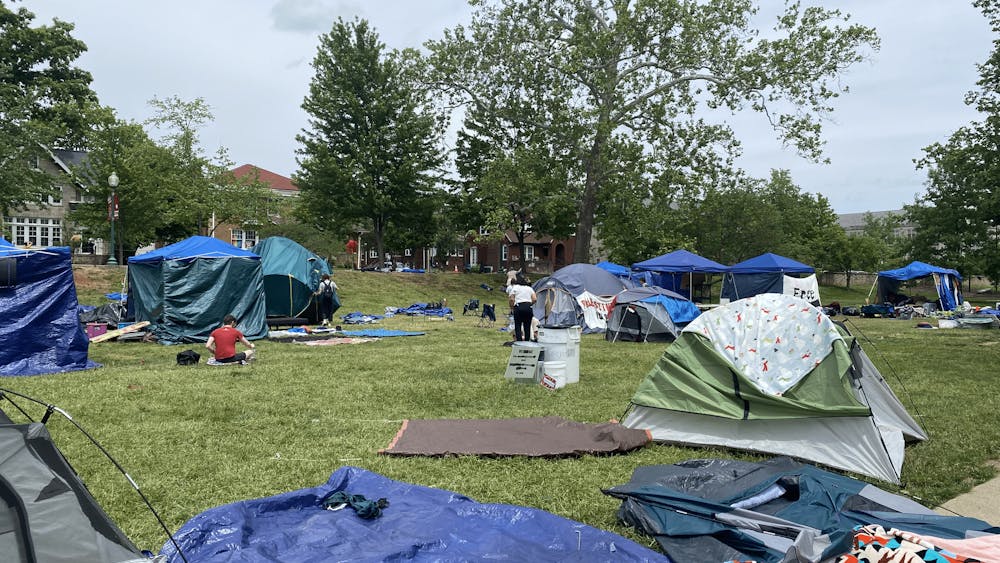IU junior Nurul Huda Mohammad Zal and her friends window shopped at the College Mall in Bloomington. They wore western clothes, but one thing stood out. They donned hijabs, the traditional headwrap worn by some Muslim women.
One man noticed.
“Go back to your fucking country,” he said.
Afraid to respond, Mohammad Zal turned back to her friends in silence.
She said she expected people to act like this, but in the moment she was terrified.
“I felt horrible,” she said later. “I just didn’t understand why people would treat someone like that just because they dress differently.”
Mohammad Zal, who came to the United States from Malaysia to go to college, said her hijab often attracts uncomfortable looks when she travels outside of Bloomington.
She said people are only uncomfortable with hijabs because they don’t understand them.
While Muslim women wear hijabs to show modesty and piety, every woman has her own reason for wearing a hijab, but Mohammad Zal said many people mistake these reasons for coercion.
She said this lack of understanding may have contributed to the European Union court decision earlier this month that allows companies to ban visible religious symbols like hijabs. The decision follows last year’s ban on burkinis by several mayors in southern France.
While hijabs only cover a woman’s hair, burkas are a long, loose garment which cover the whole body. They are worn in public by many Muslim women.
A 2016 French study by Open Society Foundations, an international grantmaking network, found Muslim women wearing headscarves already had only a 1-percent return rate when applying for jobs. Also in 2016, the European Network Against Racism released a study indicating 44 percent of employers in Belgium said headscarves reduce chances of being accepted for a job.
Even in the U.S., IU junior Reem Alturki said she often worries when walking into interviews if her hijab or her name will keep her from getting the job.
In her junior year of high school, Alturki chose her first hijab. It was lilac — her favorite color. From the first day she wore it, she said she received strange looks and ridiculous questions.
“They’d ask me the stupidest things, like, ‘Do you shower?’” she said.
Alturki said she still answers these questions because she wants people to understand.
She said she sees having these conversations as her responsibility to educate, and she sees wearing a hijab as her responsibility in normalizing headscarves and Islam in general.
Even if people try to prevent her from wearing her hijab, Alturki said there’s no point.
“Even if I take this off, I’m still a Muslim,” she said. “You can’t take that away from me.”
Mohammad Zal said the court decision also infringes on Muslim women’s freedom of choice.
“We should have the right to choose what we want to wear and not be treated differently because of some clothes,” she said.
Mohammad Zal said this restriction of their right to choose is ironic because many people have the misconception that Muslim women have no choice in wearing hijabs, but this is not the case.
When Mohammad Zal began wearing a hijab at age 13, she did so because of tradition, but as she grew up, wearing a hijab became a decision she made entirely for herself.
“If we don’t want to wear it, we don’t,” she said.
Instead, Mohammad Zal said she chose to wear a hijab as a symbol of modesty and because it makes her feel comfortable and protected.
“When I walk out with my hijab, I feel confident,” she said.
She also doesn’t have to worry about her hair, she said with a laugh.
IU alumna Katherine Barrus said she is reluctant to say her hijab makes her feel protected.
Instead, she said some people may threaten her safety just because she chooses to wear a hijab.
At times, Barrus has been yelled at in public. Once a man followed her in his truck before pulling up beside her and yelling.
Despite these threats, Barrus said she still chooses to wear a hijab, but she said people still falsely see hijabs as a symbol of oppression among Muslim women.
Barrus converted to Islam when she was 22 years old, so she said she understands hijabs as both an outsider and an insider. Barrus said she sees why others might have questions about hijabs. The problem lies in how they try to answer these questions.
“Instead of looking for the answers by talking to actual Muslims, people often look to the media or people who know nothing about Islam,” Barrus said. “And then that just feeds misconceptions.”
Mohammad Zal said one way to combat misconceptions is through education. Even with the man who demanded she leave the country at the College Mall, she doesn’t blame those who are uneducated about Islam and hijabs. She only wants to help them understand.
“But it’s hard to educate people because they may not be willing to be educated,” she said. “They may not want to listen.”
So Mohammad Zal said the best way to spread the truth about hijabs is through direct contact with Muslim people. If people see Muslims wearing hijabs as their neighbors, she said they will be less likely to be uncomfortable with the headscarves.
Efforts like the EU court ruling are counterproductive because they make a Muslim person out to be the “other” rather than a neighbor, she said.
“People need to see hijabs and Islam as something normal if we want equal treatment,” she said. “Making them seem like they are so different and strange just makes misconceptions stronger.”






